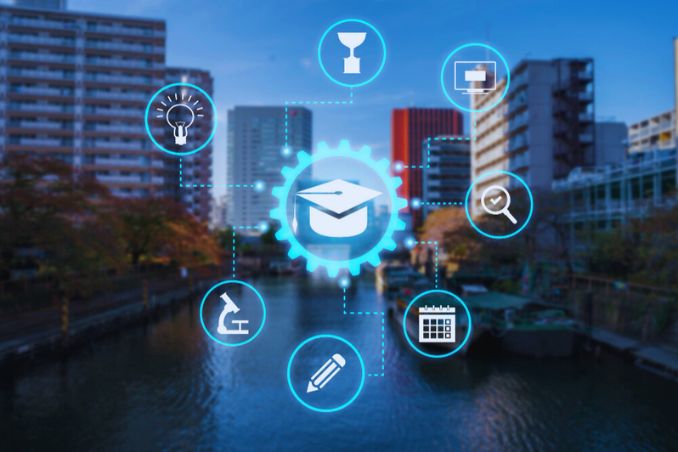What Makes a Learning Management System Truly Effective
13 May 2025
5 Mins Read

- What Are The Different kinds of Learning Management Systems Available?
- SaaS LMS
- On-premise LMS
- Self-hosted LMS
- Custom-built LMS
- Mobile LMS
- Open-source LMS
- What Makes a Learning Management System Effective?
- It Should Be Easy to Use for Everyone
- It Should Work for Different Kinds of Learning
- It Should Help You (and Teachers) Understand What’s Happening
- It Should Come with Real Support
- It Should Make Learning Better, Not Just Digital
- Track Your Learning Process
A learning management system, also called an LMS, is a website or app that schools use to share assignments, lessons, grades, and messages between teachers and students.
Think of it like a digital classroom. However, not all LMS platforms are easy to use or helpful. Some make things harder for everyone. A good LMS should feel smooth and helpful.
It should let teachers teach the way they want and help students stay organized and focused. If students are getting lost or teachers are wasting time, something’s off.
Moreover, the global LMS has grown significantly in the last few years. In 2019, its valuation was $8.76 billion, and it is expected to reach $38.10 billion by 2017, with a 19.7% Compound Annual Growth Rate.
What Are The Different kinds of Learning Management Systems Available?

There are six different types of LMS available. Let’s take a look at those:
- SaaS LMS
- On-Premise LMS
- Self-hosted LMS
- Custom-built LMS
- Mobile LMS
- Open-source LMS
SaaS LMS
If you do not want to go through a complex setup process, then this is the one you should choose. However, you have to be careful while choosing one, as providers often offer limited customization options.
Go for the ones that will allow customization and a smarter solution depending on your needs.
On-premise LMS
This provides companies more control over their system and data management as well. Employees can access the LMS from the company’s network and do not need any other internet connection.
However, the cost of getting the hardware, upgrading, and maintaining the system requires significant cost and dedicated IT resources.
Self-hosted LMS
Self-hosted LMSs offer companies complete control over the learning environment, allowing extensive customization and data security. However, they require in-house IT expertise for updates and maintenance.
Custom-built LMS
Companies depend on the in-house development team or external consultants to prepare a customized LMS for a custom-built LMS. These are specifically on-premise and inherit both advantages as well as some challenges of being an on-premise system.
Mobile LMS
Mobile learning management systems allow trainees to get hold of their learning materials from their mobiles and support strategies like learn on the go and micro-training.
You can learn from the comfort of your home with this, and in the classroom as well. This provides convenience and flexibility.
Open-source LMS
This is a community-driven platform where users can come together to improve the system. This platform is highly customizable and flexible to adapt to the unique needs.
However, users might need technical expertise every now and then, and leave you stranded when you are looking for troubleshooting.
What Makes a Learning Management System Effective?
The educational landscape is undergoing a major digital transformation. Online learning has become an important part of the educational tiers.
Similarly, businesses incorporate this trend into their training and development initiatives. However, there are certain criteria that need to be fulfilled to make the learning management system effective.
It Should Be Easy to Use for Everyone
No one wants to spend 10 minutes just trying to find the homework. A good LMS is simple to use. You should be able to log in and quickly see what’s due, what’s graded, and what’s new.
Teachers should be able to upload lessons and give feedback without needing tech support. If students or teachers get confused every time they use it, that LMS is not doing its job.
The goal is to save time, not waste it. Good design matters, even for school tools. If it’s not clear, people will stop using it, or use it wrong.
It Should Work for Different Kinds of Learning
Not every student learns the same way, and not every teacher teaches the same way. A great LMS gives options. Some classes might use videos. Others might use group discussions, quizzes, or reading guides.
A good platform should support all of these, whether you’re learning at home, in school, or both. It should also work well on phones and laptops.
And if a teacher wants to connect it with other tools like Google Docs or Zoom, it should be easy to do. The best LMS platforms help people teach and learn in their own style.
It Should Help You (and Teachers) Understand What’s Happening
One of the most useful parts of an LMS is that it shows how things are going. Teachers can see who’s turning in work, who’s struggling, and what lessons are working best.
But just collecting data isn’t enough. The LMS should make it easy to understand that data, maybe with charts or simple reports.
Behind the scenes, some schools use smart tools like a security data lake to keep track of login info, assignment activity, or system errors. This helps schools stay safe and also notice problems early, like cheating or students who stop showing up.
It Should Come with Real Support
Even if a learning system looks easy, people still need help sometimes. That’s why a good LMS includes training and support for both students and teachers.
Teachers need to learn how to use the tools in ways that help their lessons, and students need to know where to click and what to expect.
If someone gets stuck, there should be help guides or someone to ask. A tool is only good if people know how to use it. Schools that give ongoing help, like tutorials or tech support, get the most out of their LMS.
It Should Make Learning Better, Not Just Digital
At the end of the day, the point of an LMS is to make learning better. That means making things easier to find, keeping students and teachers connected, and helping everyone stay on track.
If it’s just a fancy-looking folder of files, it’s not really helping. A strong LMS feels like a helpful teammate in class, not a chore. When it’s easy, flexible, smart, and supported, it works. And when it works, learning gets better for everyone involved.
Track Your Learning Process
All effective learning management system lets you track your progress in learning and verify whether you are achieving their milestones. Most LMSs include analytics and reporting capabilities to identify different parts of the e-learning course.
Moreover, it shows them the areas that need improvement and places where they are doing well. If you find various learners struggling with a particular course, then you can evaluate the content and make changes to help them proceed.



















Comments Are Closed For This Article